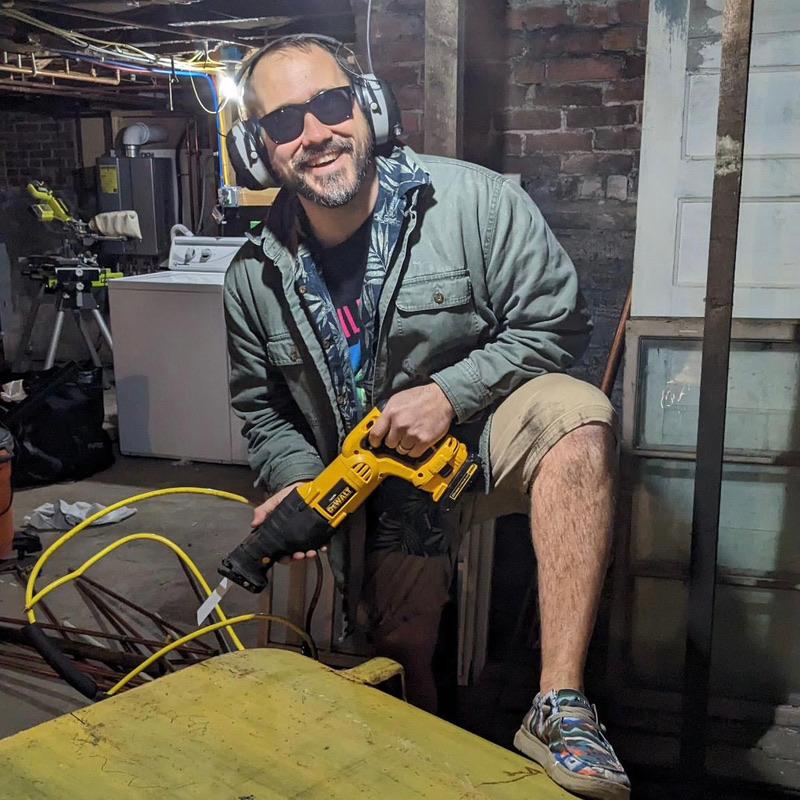Editor’s Note: The following story first appeared in The Maine Monitor’s free environmental newsletter, Climate Monitor, that is delivered to inboxes every Friday morning. Sign up for the free newsletter to get important environmental news by registering at this link.
Last fall, shortly after our daughter was born, my husband and I packed our bags and boxes and moved to a new (to us) house, not far from where we had been living, with a bit more room to stretch out. Like a lot of houses in Maine, this one is old (built in 1902), marginally insulated (horsehair plaster abounds), and is a veritable history museum of evidence of its owners’ attempts to keep the place warm during the biting Bar Harbor winters.
There are coal stains on the basement walls, blocked floor vents on the first floor, propane tanks in the backyard, baseboards throughout, electric heat pumps, and, of course, that staple of most Maine houses: the oil tank.
As my co-newsletter writer Annie Ropeik has been reporting in her excellent series, “Hooked on Heating Oil,” three of every five Maine households keep warm in cold winters with some form of fuel oil, the most of any state in the nation.
Officials are pushing to transition the state away from the costly, dirty fuel to other forms of energy — namely, electric heat pumps. As that happens, many homeowners find themselves, as we did, stuck with big, bulky, messy oil tanks, which create a health and safety hazard and just generally take up valuable basement real estate.
And so I offer you this guide, a down-and-dirty how-to rid yourself of an old oil tank, once and for all.
Hire a professional
This, it should be said, is what the Maine Department of Environmental Protection recommends. Removal of an old tank will likely cost between $250 to $800, said David McCaskill, an environmental engineer with the DEP, depending on how complicated it is to get out.
Quotes we got were far higher than that — up to $2,000 — even though our tank was down a short flight of bulkhead stairs and relatively easy to access, but one contractor did come down to $800 once we told him the DEP range.
There isn’t funding available for tank removal, although some programs will give money to eligible homeowners to help replace tanks and winterize their homes. You can contact your local Community Action Program here to see if you qualify.
The state does not keep a list of contractors who can remove old tanks, but fuel oil companies (such as Dead River) will typically do so, although often only for customers, and waits can be long — our company was too busy to schedule a date, and simply said they’d call back in a few months.
A quick Google search should turn up contractors in your area; you can also call the Maine Fuel Board at 207-624-8627 to get the name of licensed technician. The Maine DEP has more information as well; you can contact McCaskill at 207-592-8054 with questions that aren’t answered here.

Take it out yourself
This is not without its complications, and it should be noted that the state does not recommend you do this. But it is possible, and people (us included) have done it. Here are the steps, with information from the Maine DEP’s Home Heating Oil Tank Replacement Program Contract Specifications.
1. Check to see if your local municipality requires a permit. The state does not require a permit to remove old tanks, but some towns and cities do.
2. Go through this checklist to determine if you’re at risk of a spill.
3. Before you move the tank, make sure all of holes, including any corrosion holes, are plugged or capped, with the exception of the vent pipe, which must be left unplugged to prevent the excessive pressure differential that can be caused by extreme temperature changes.
4. Get the old oil out. Don’t spill it. (If you do spill it, report it to the DEP immediately.) We didn’t have a use for the old oil that was in our tank, so we put up a post on Facebook seeing if anyone did and would come pump out whatever was left. We didn’t know how much was in there, or exactly how old it was, but heating oil prices were high, and within minutes we had several responses. One of those respondents showed up a week later and pumped out the old oil (which turned out to be in decent shape and, to my surprise, dyed pink) into a tank that was strapped into the back of her truck. She didn’t want the tank, but some entrepreneurial souls will take both, and sell the tank for scrap once it’s cleaned (more on that below).
5. Make sure you have proper ventilation so that harmful vapors don’t accumulate.
6. Cut the tank in half and cut both ends out, OR cut a 16 inch x 24 inch inspection hole. We had to cut ours in half, since it wouldn’t fit through the bulkhead doors otherwise. My husband chopped it up with a Sawzall, which worked reasonably well and fairly quickly. Wear ear and eye protection, of course — cutting through metal is loud, and emergency eye appointments aren’t cheap.
7. Clean out any remaining sludge, scale and any other residue (this is the gross part). If it’s too wet, you can solidify it using an absorbent like Speedi Dri, which soaks up the old oil. If you use rags, they can be disposed of like normal waste as long as they’re very dry — if even a single drop can be wrung out of it, it’s too wet. Non-dripping sludge can go in the household trash, said McCaskill. Wet sludge is hazardous; check here for disposal options.
8. Take the clean metal (most tanks are made of 12 gauge steel) to a licensed scrap yard. Your local municipality can tell you where to take it; this is where we also made use of Facebook and enlisted someone who collects scrap, who came and hauled it away one afternoon.
Be sure to check out Annie’s excellent story and stay tuned for the second installation later this month, which explores the benefits and challenges of electric heat pumps as Maine’s chosen solution to heating oil dependence.
To read the full edition of this newsletter, see Climate Monitor: How to remove an oil tank, a brief guide.
Kate Cough covers climate change and the environment for The Maine Monitor. Reach her with story ideas by email: gro.r1754373068otino1754373068menia1754373068meht@1754373068etak1754373068.








